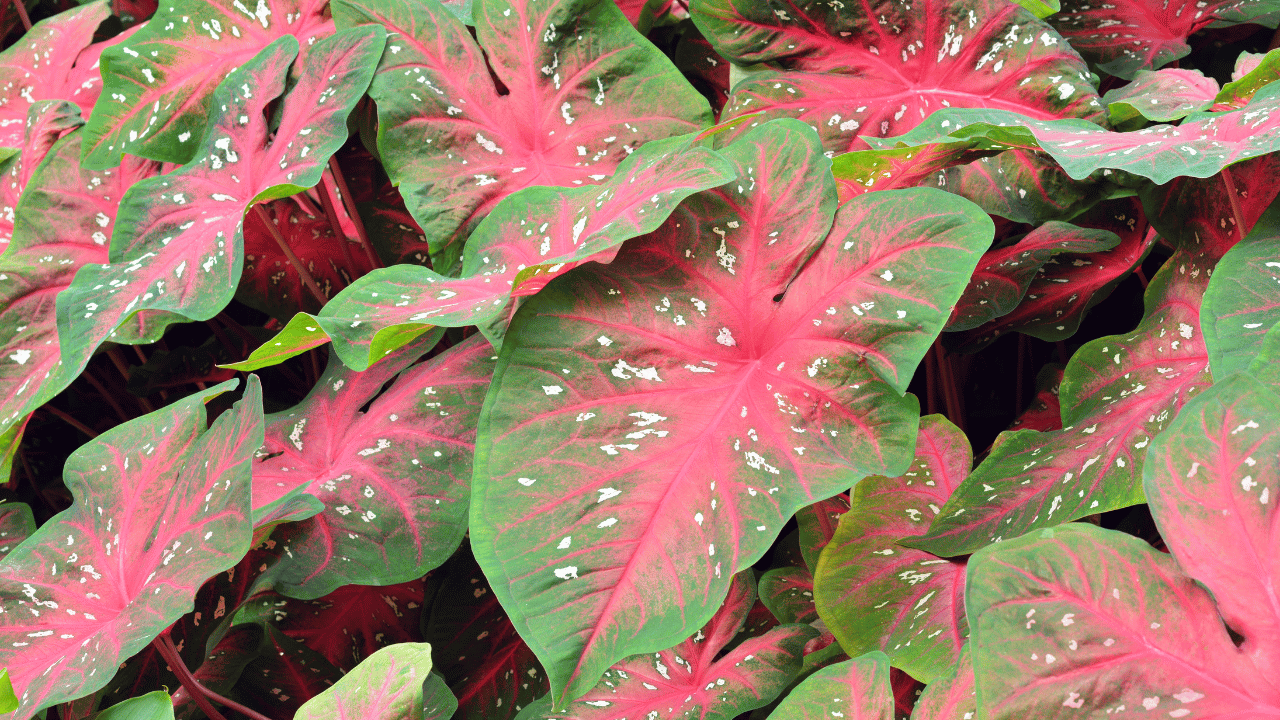Caladiums are known for their stunning, vibrant leaves that can brighten up any garden or indoor space. To keep these tropical beauties thriving, it’s essential to follow the right care routine. Although relatively easy to maintain, caladiums require specific conditions to truly flourish. Here are ten crucial tips to help you grow healthy, colorful caladiums that will remain lush and radiant throughout the growing season.
1. Provide Indirect Light
Caladiums prefer bright but indirect light. Direct sunlight can scorch their delicate leaves, while too little light will stunt their growth. Outdoors, place them under partial shade or dappled sunlight, which mimics their natural habitat under the canopy of trees.
Indoors, make sure to position caladiums near a window with filtered sunlight. East or north-facing windows work well, as they receive gentle morning or indirect light, ensuring your caladiums grow beautifully without their leaves losing color or vitality.
2. Maintain High Humidity
Caladiums thrive in humid conditions, so maintaining moisture around them is crucial. Use a humidifier, or place a shallow tray of water near the plants to increase humidity levels in your home. Alternatively, mist the leaves lightly every few days, but avoid over-wetting them to prevent fungal issues.
In outdoor gardens, planting them near water features or in shaded, humid corners can replicate the tropical environment they love. High humidity promotes lush, vibrant growth and keeps the leaves looking their best.
3. Water Consistently but Avoid Overwatering
Caladiums need regular watering, but overwatering can lead to root rot. Keep the soil consistently moist, especially during the growing season, but allow the top inch to dry slightly before watering again. Always use well-draining soil to prevent water from sitting at the roots.
In the dormant winter months, reduce watering significantly as the plant requires less moisture. Watch for signs of underwatering, such as drooping leaves, but also be cautious not to water too frequently, as caladiums are sensitive to soggy conditions.
4. Use Well-Draining Soil
These plants need soil that retains enough moisture but drains well to avoid root rot. A mix of peat, perlite, and compost is ideal. Caladiums enjoy slightly acidic to neutral soil, with a pH between 5.5 and 6.5.
If planting outdoors, ensure the area has good drainage. Raised beds or containers are excellent options, as they allow you to control the soil mix and prevent the risk of waterlogging, which can quickly damage caladium roots.
5. Fertilize During the Growing Season
Fertilizing caladiums regularly during their active growing season will encourage robust growth and vivid leaf coloration. Use a balanced, water-soluble fertilizer every four to six weeks. For the best results, choose one with slightly higher phosphorus content to promote vibrant foliage.
Avoid over-fertilizing, as too much nitrogen can cause excessive leaf growth at the expense of color. During dormancy, stop fertilizing altogether, as the plant doesn’t require extra nutrients when it’s not actively growing.
6. Watch for Pests and Diseases
Caladiums can be susceptible to pests like aphids, spider mites, and mealybugs, as well as fungal issues caused by overly damp conditions. Regularly inspect your plants for small insects or discolored patches on the leaves. Treat infestations promptly with insecticidal soap or neem oil.
To prevent fungal infections, ensure proper airflow around the plants and avoid getting the leaves too wet. Early detection and intervention are crucial in keeping your caladiums healthy and pest-free.
7. Repot Every 1-2 Years
Caladiums can become root-bound in their pots over time, which stifles growth. Repot your plants every one to two years to refresh the soil and give the roots more room to expand. Choose a pot that’s only slightly larger than the current one, as too much space can cause the soil to retain excess water.
When repotting, check the roots for any signs of rot or damage and prune them if necessary. Repotting also gives you an opportunity to divide overcrowded tubers, which can promote healthier growth.
8. Allow for Dormancy
Caladiums enter a dormant period during the colder months when they die back to their tubers. Allow the plant to naturally go dormant by gradually reducing watering as the leaves begin to yellow and die back. Store the tubers in a cool, dry place until the next growing season.
Once spring arrives, you can replant the tubers in fresh soil and resume regular care. Dormancy is a natural part of the caladium’s life cycle and ensures a stronger regrowth for the next season.
9. Mulch to Retain Moisture Outdoors
When growing caladiums outdoors, mulching around the base of the plants helps retain soil moisture and keeps the roots cool. Use organic materials like shredded bark or leaf mulch to protect the tubers and maintain a consistent moisture level.
Mulching also helps prevent weed growth, which can compete with your caladiums for nutrients and water. Be careful not to pile the mulch directly against the stems to avoid encouraging rot.
10. Position for Warm Temperatures
Caladiums are sensitive to cold and require consistently warm temperatures to thrive. Keep them in a spot where temperatures stay between 70°F and 85°F during the growing season. If temperatures dip below 60°F, your caladiums may begin to suffer.
If you’re growing them outdoors, be sure to bring them inside when cooler weather approaches. Indoors, avoid drafty windows or doors, as caladiums can react poorly to cold air and sudden temperature changes.

